
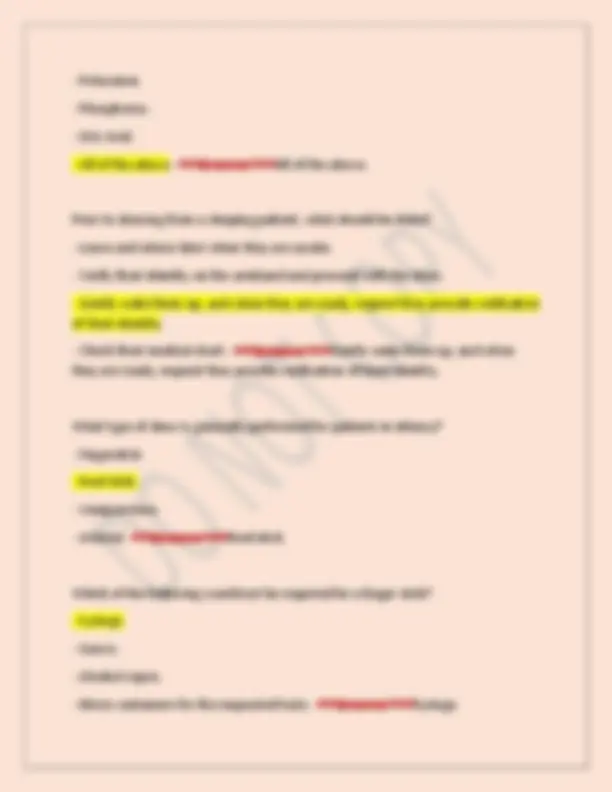
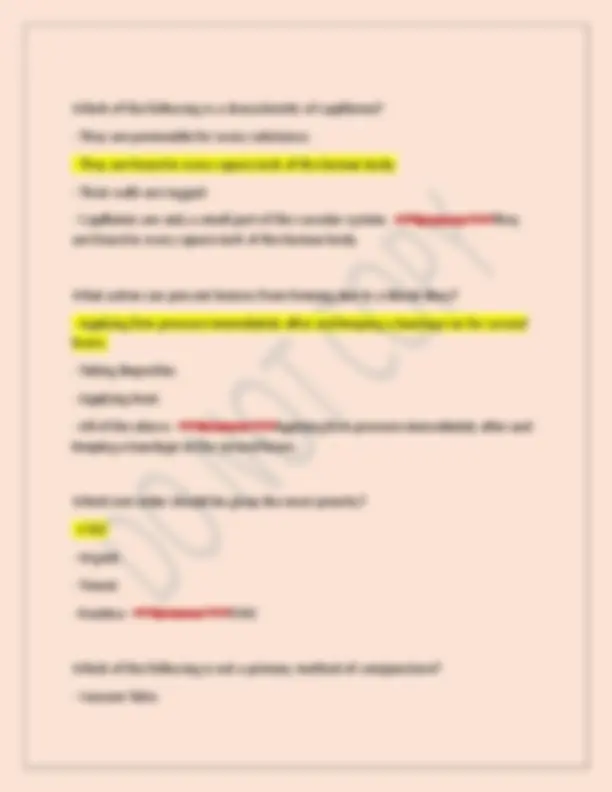
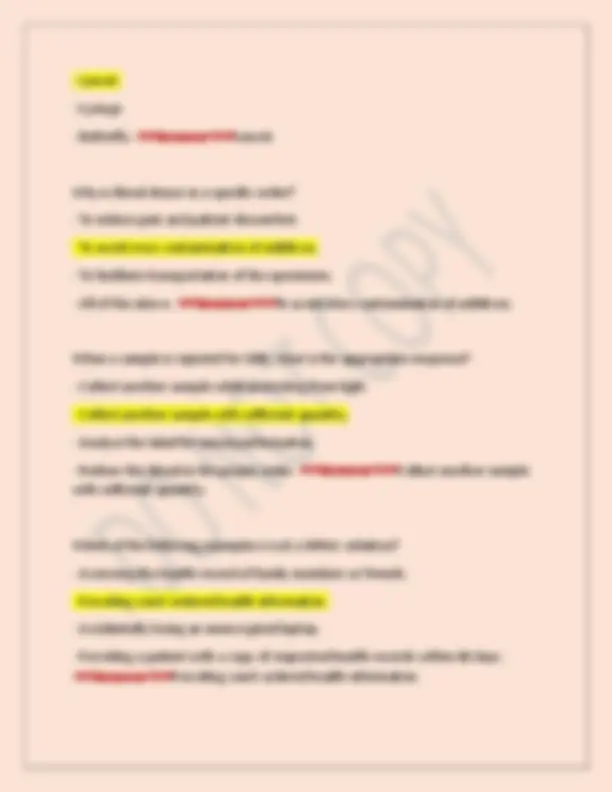
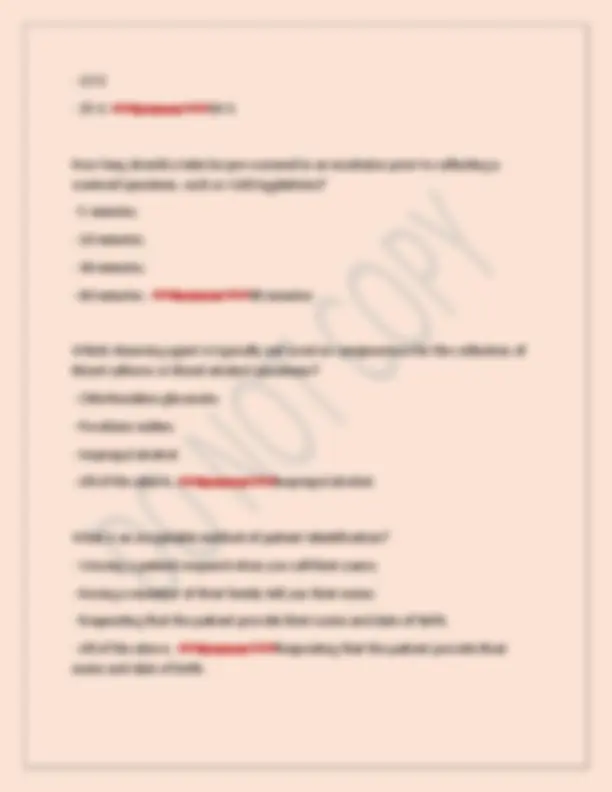
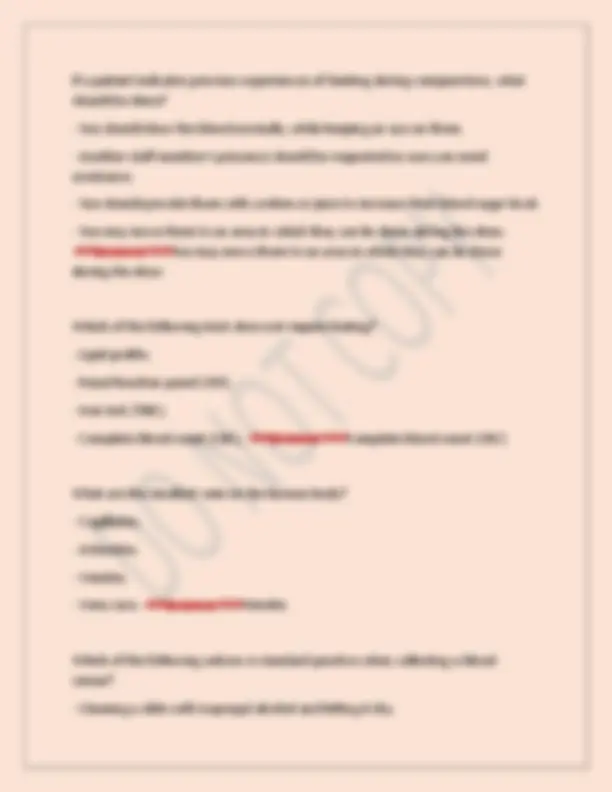
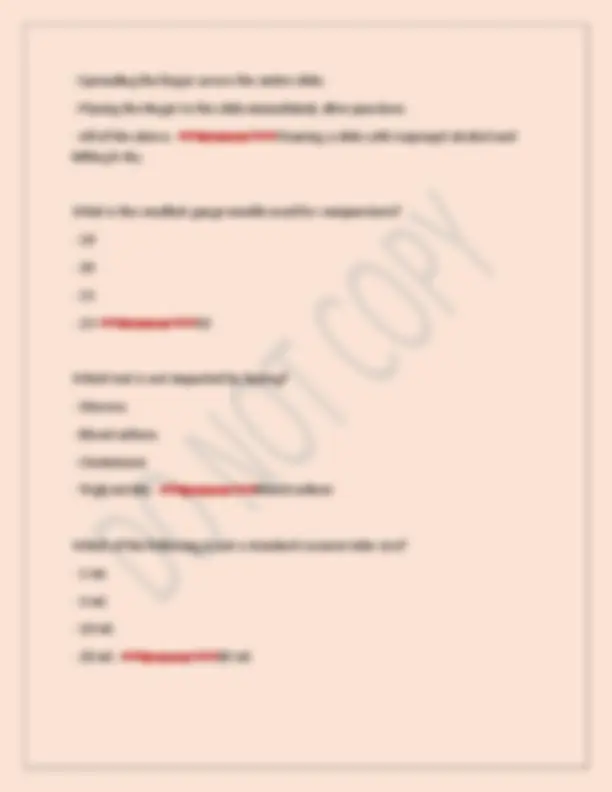

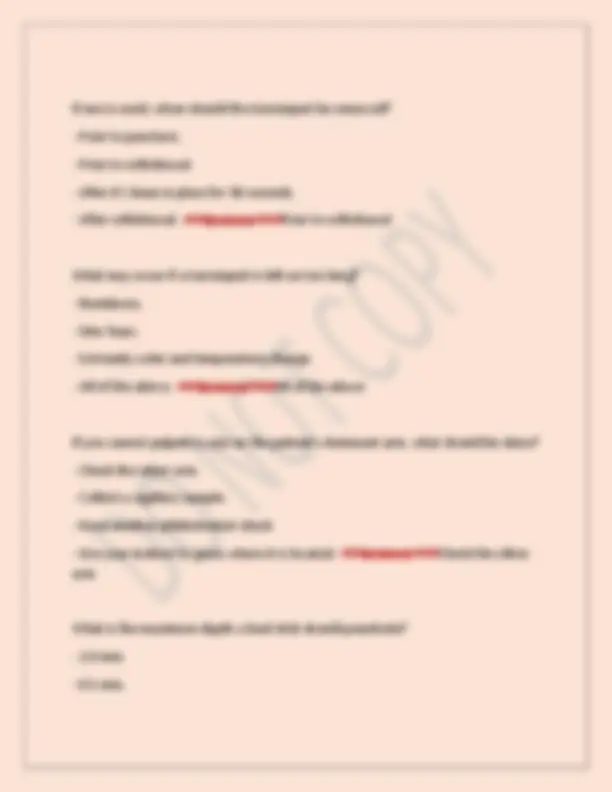
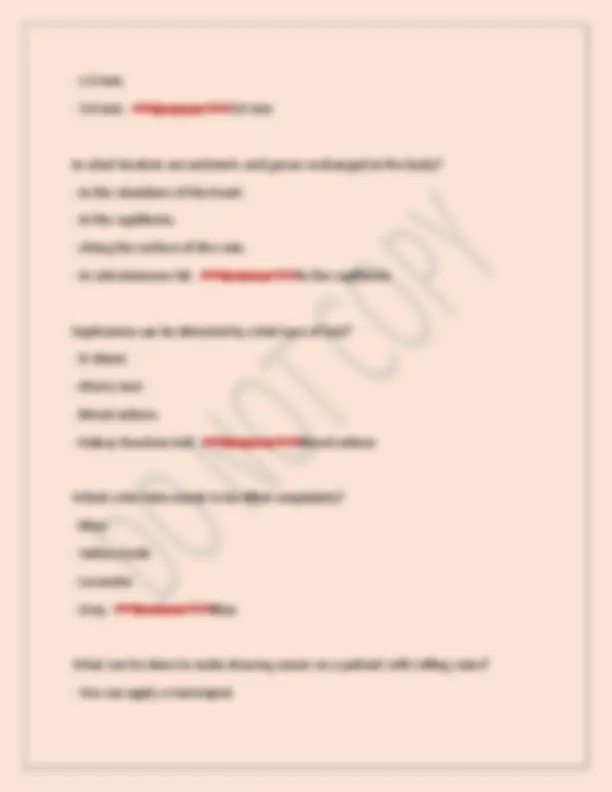
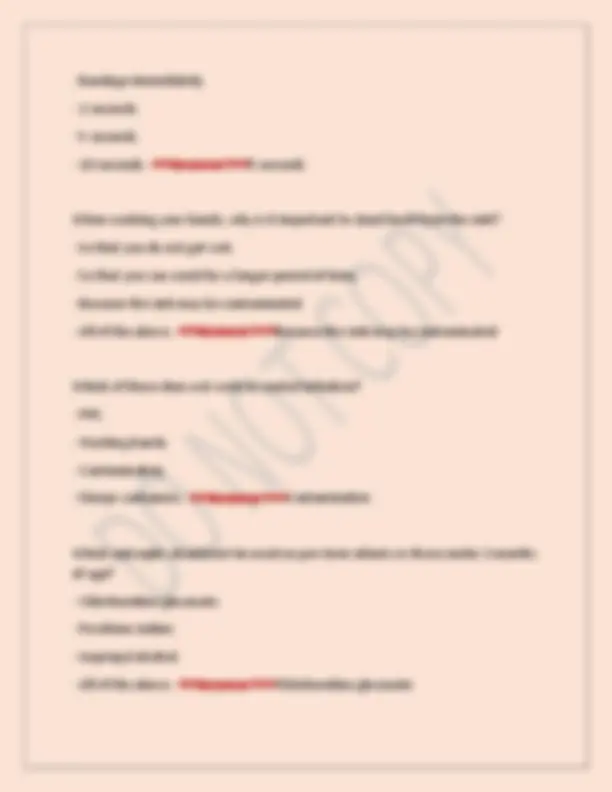
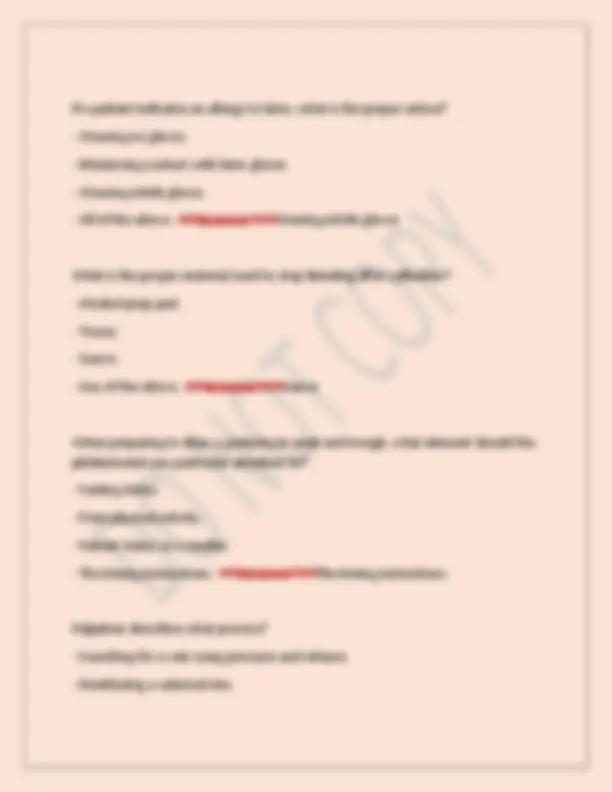
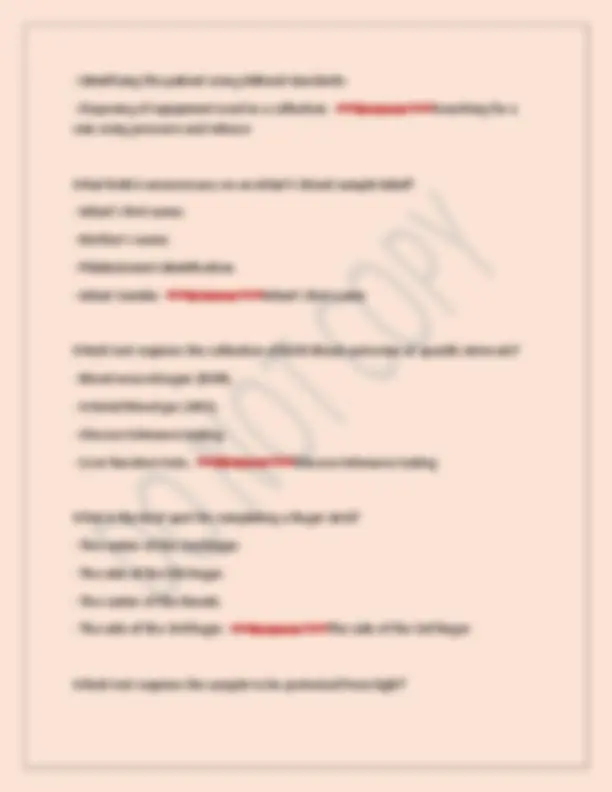
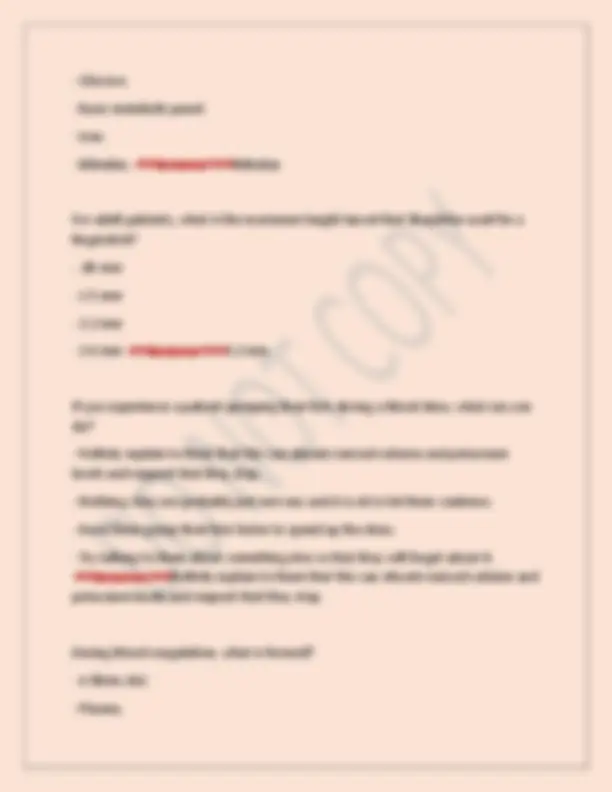
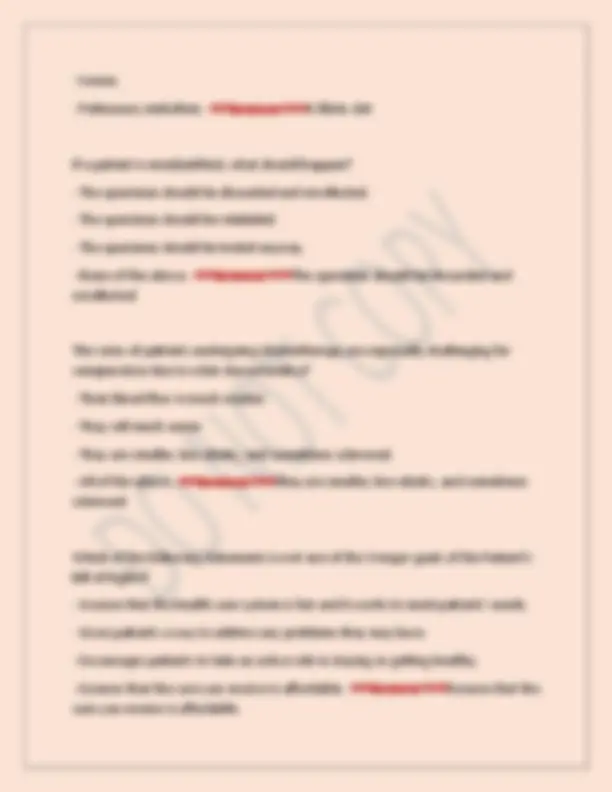
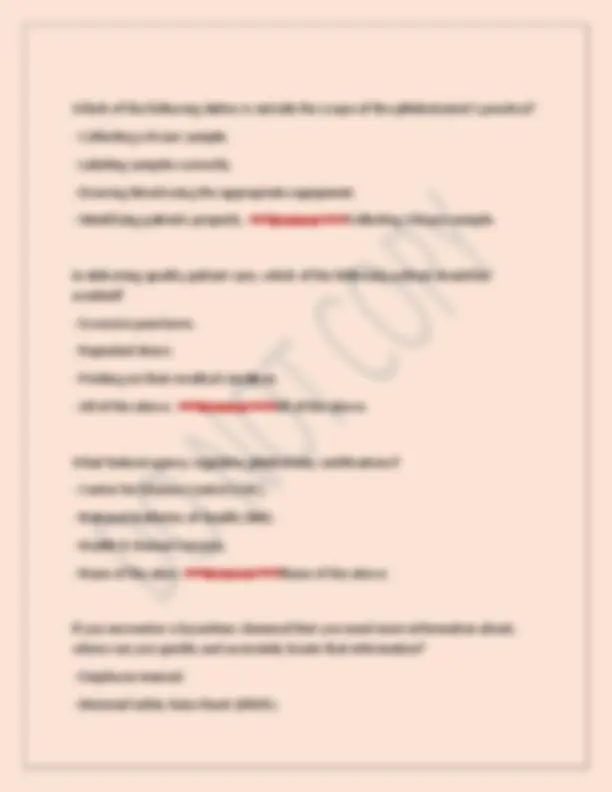
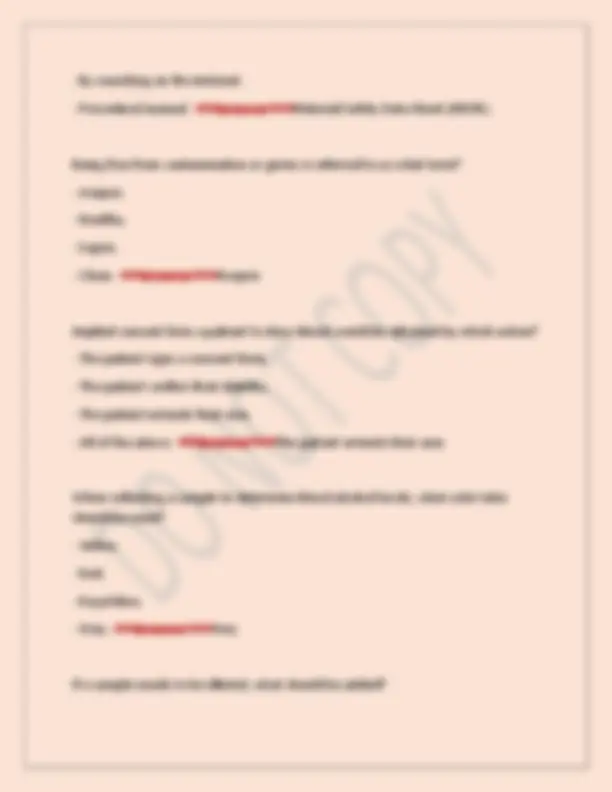
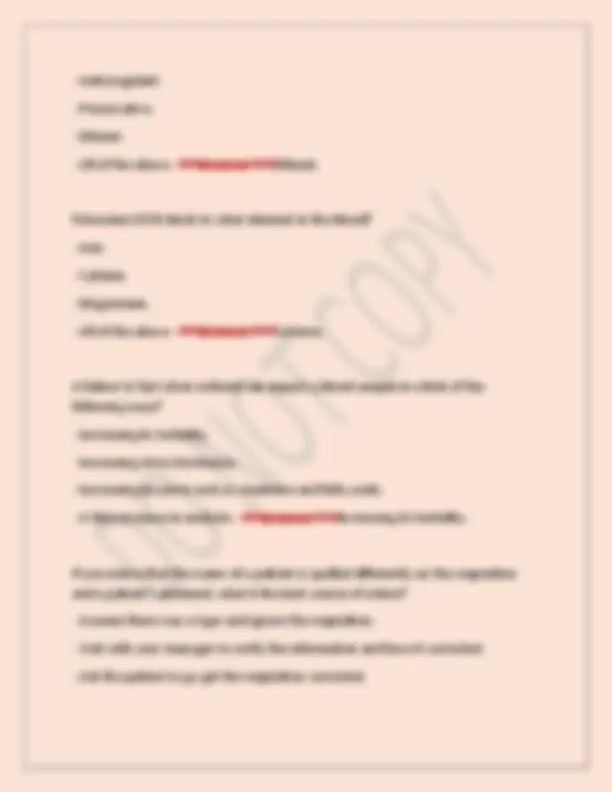
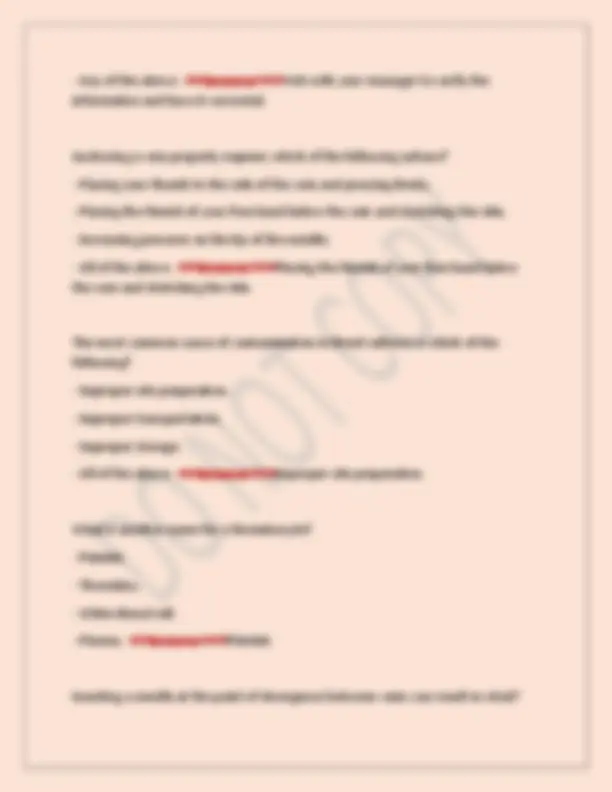
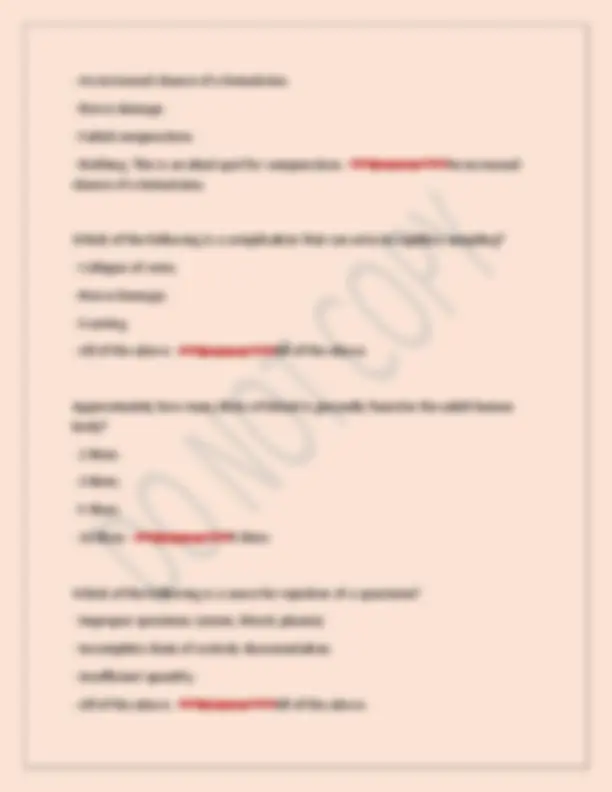
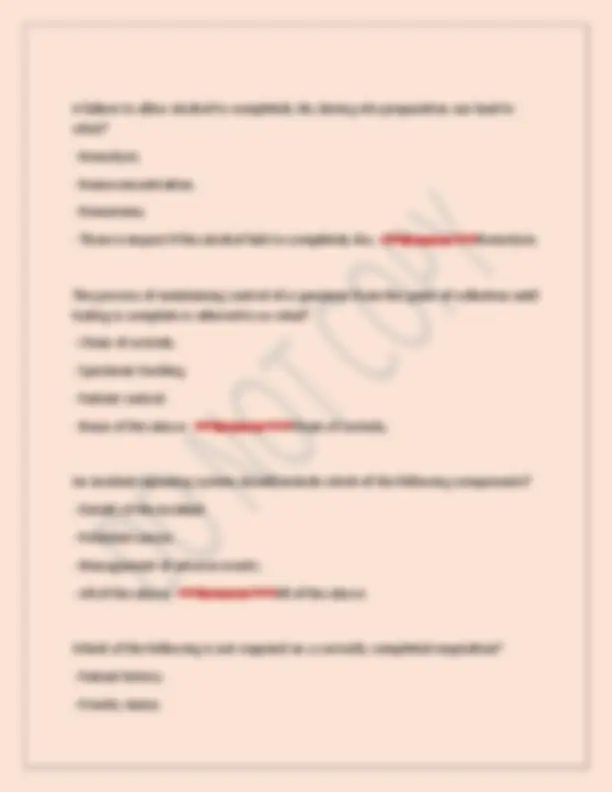
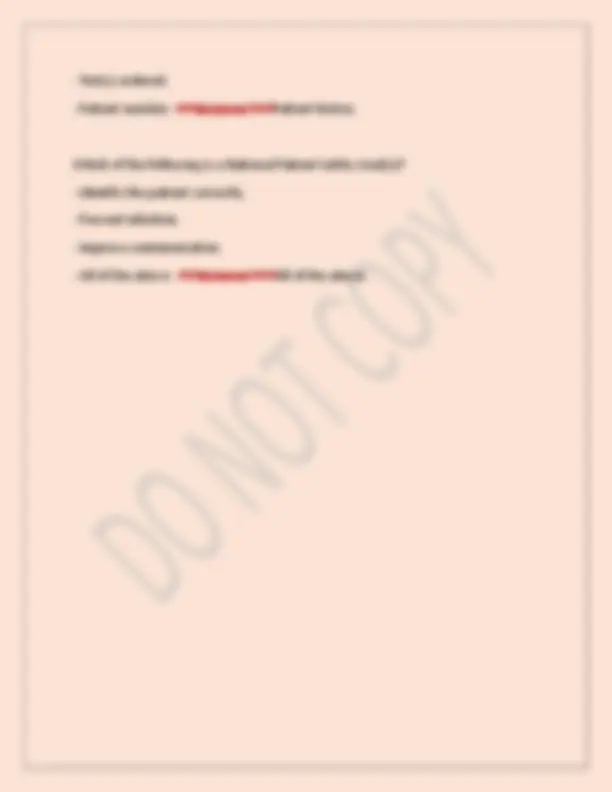


Study with the several resources on Docsity

Earn points by helping other students or get them with a premium plan


Prepare for your exams
Study with the several resources on Docsity

Earn points to download
Earn points by helping other students or get them with a premium plan
Community
Ask the community for help and clear up your study doubts
Discover the best universities in your country according to Docsity users
Free resources
Download our free guides on studying techniques, anxiety management strategies, and thesis advice from Docsity tutors
Phlebotomy Practice National Exam Questions and Answers 2023, Exams of Nursing
Typology: Exams
1 / 29

This page cannot be seen from the preview
Don't miss anything!






















Workplace safety in a lab is governed by which agency?
What is the proper sequence for putting on PPE?
Which of the following is a characteristic of capillaries?
What types of safety hazard might you encounter while working as a phlebotomist?
What is the most common cause of blood culture contamination?
If one is used, when should the tourniquet be removed?
What is the optimal angle in which a needle should be inserted in order to minimize the likelihood that the needle will go all the way through the vein?
If a patient indicates an allergy to latex, what is the proper action?